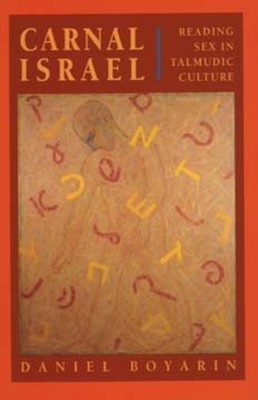
- We will send in 10–14 business days.
- Author: Daniel Boyarin
- Publisher: University of California Press
- ISBN-10: 0520203364
- ISBN-13: 9780520203365
- Format: 15.3 x 22.8 x 1.8 cm, minkšti viršeliai
- Language: English
- SAVE -10% with code: EXTRA
Reviews
Description
Beginning with a startling endorsement of the patristic view of Judaism-that it was a "carnal" religion, in contrast to the spiritual vision of the Church-Daniel Boyarin argues that rabbinic Judaism was based on a set of assumptions about the human body that were profoundly different from those of Christianity. The body-specifically, the sexualized body-could not be renounced, for the Rabbis believed as a religious principle in the generation of offspring and hence in intercourse sanctioned by marriage.
This belief bound men and women together and made impossible the various modes of gender separation practiced by early Christians. The commitment to coupling did not imply a resolution of the unequal distribution of power that characterized relations between the sexes in all late-antique societies. But Boyarin argues strenuously that the male construction and treatment of women in rabbinic Judaism did not rest on a loathing of the female body. Thus, without ignoring the currents of sexual domination that course through the Talmudic texts, Boyarin insists that the rabbinic account of human sexuality, different from that of the Hellenistic Judaisms and Pauline Christianity, has something important and empowering to teach us today.
EXTRA 10 % discount with code: EXTRA
The promotion ends in 23d.11:02:59
The discount code is valid when purchasing from 10 €. Discounts do not stack.
- Author: Daniel Boyarin
- Publisher: University of California Press
- ISBN-10: 0520203364
- ISBN-13: 9780520203365
- Format: 15.3 x 22.8 x 1.8 cm, minkšti viršeliai
- Language: English English
Beginning with a startling endorsement of the patristic view of Judaism-that it was a "carnal" religion, in contrast to the spiritual vision of the Church-Daniel Boyarin argues that rabbinic Judaism was based on a set of assumptions about the human body that were profoundly different from those of Christianity. The body-specifically, the sexualized body-could not be renounced, for the Rabbis believed as a religious principle in the generation of offspring and hence in intercourse sanctioned by marriage.
This belief bound men and women together and made impossible the various modes of gender separation practiced by early Christians. The commitment to coupling did not imply a resolution of the unequal distribution of power that characterized relations between the sexes in all late-antique societies. But Boyarin argues strenuously that the male construction and treatment of women in rabbinic Judaism did not rest on a loathing of the female body. Thus, without ignoring the currents of sexual domination that course through the Talmudic texts, Boyarin insists that the rabbinic account of human sexuality, different from that of the Hellenistic Judaisms and Pauline Christianity, has something important and empowering to teach us today.


Reviews